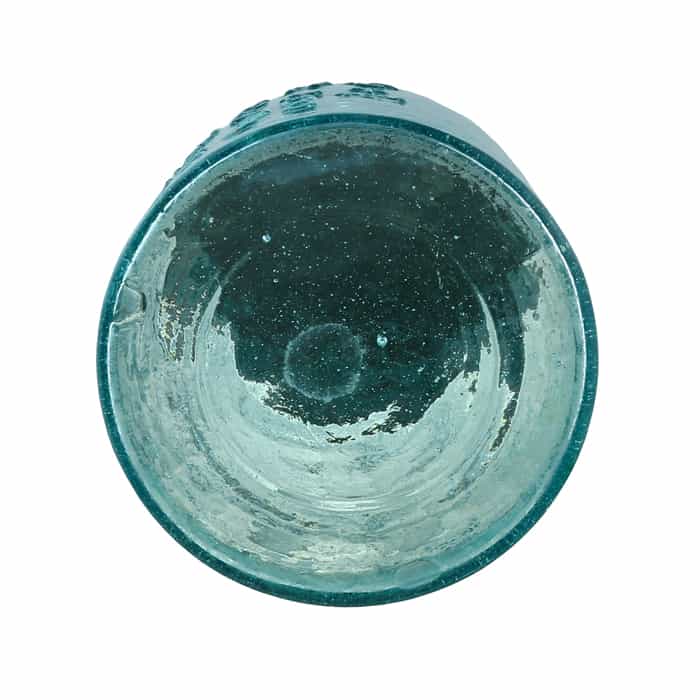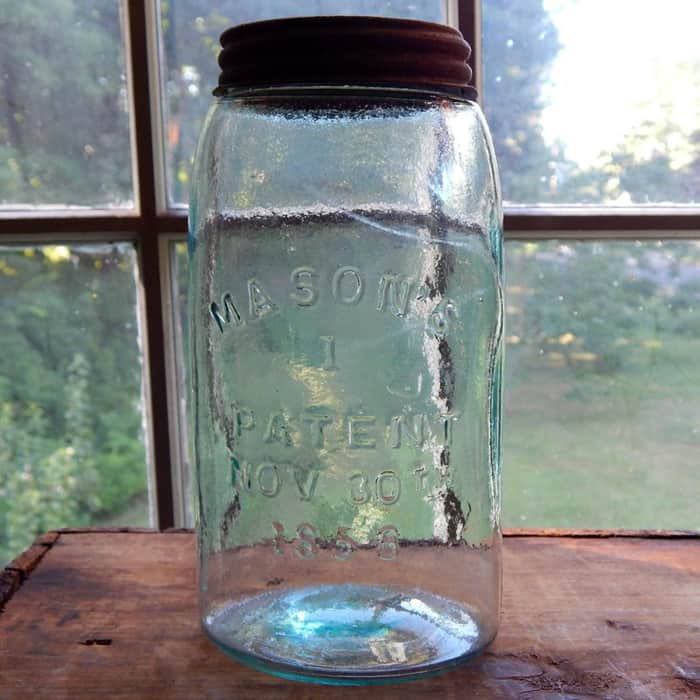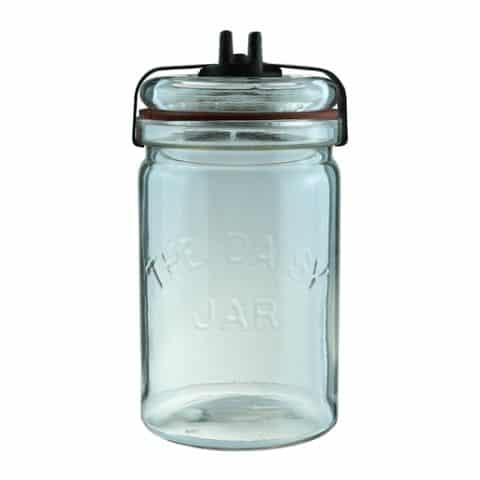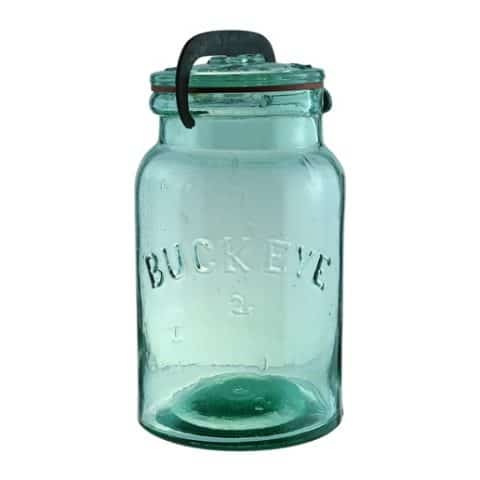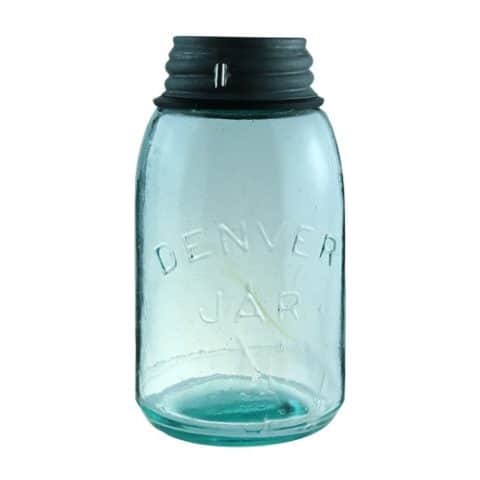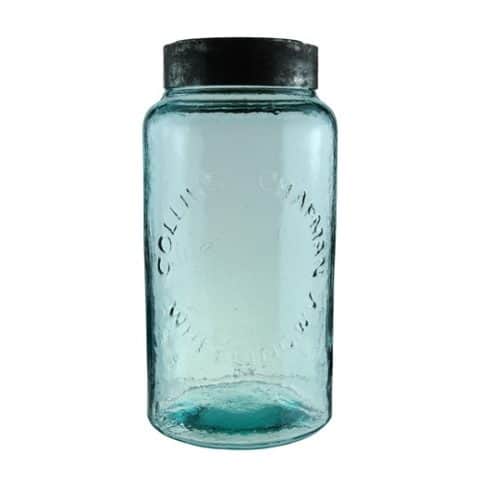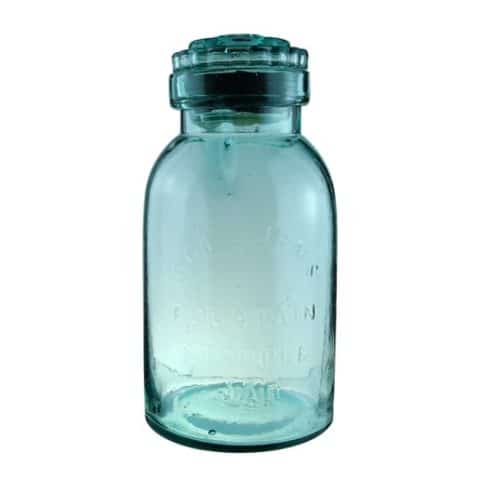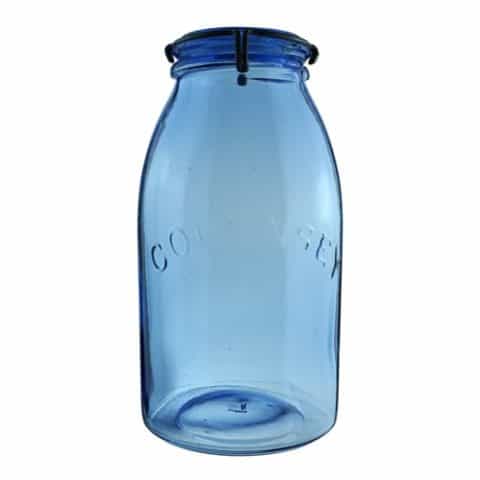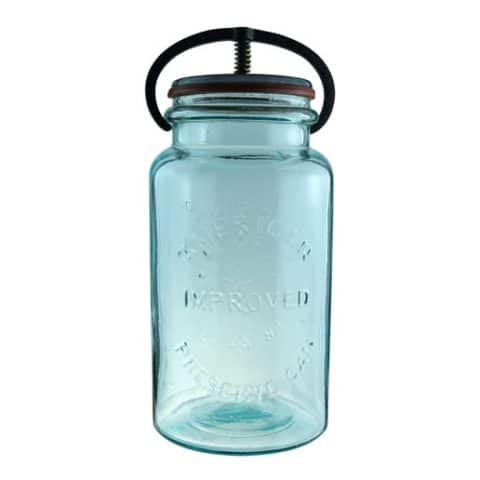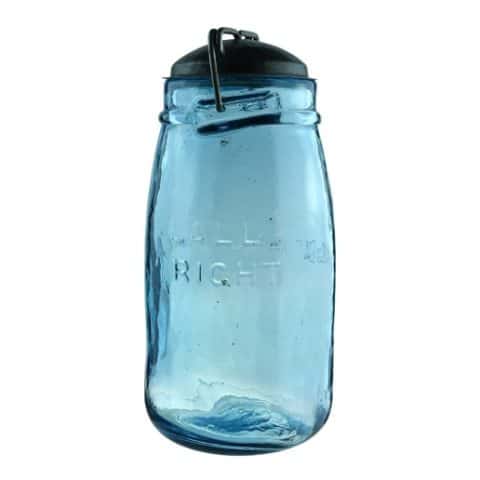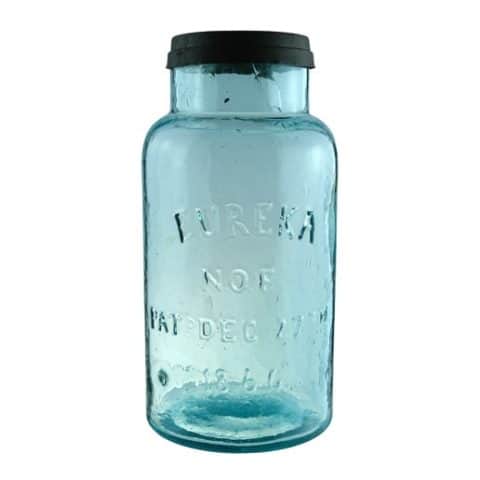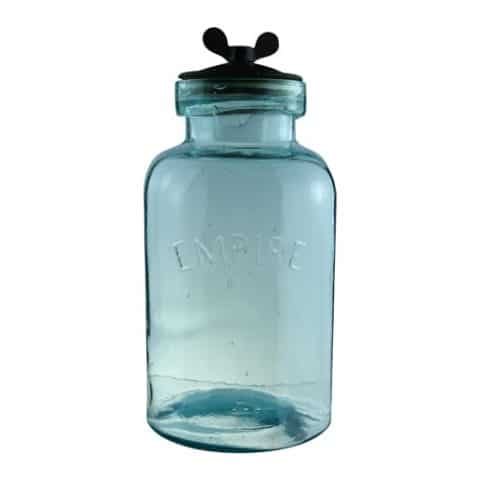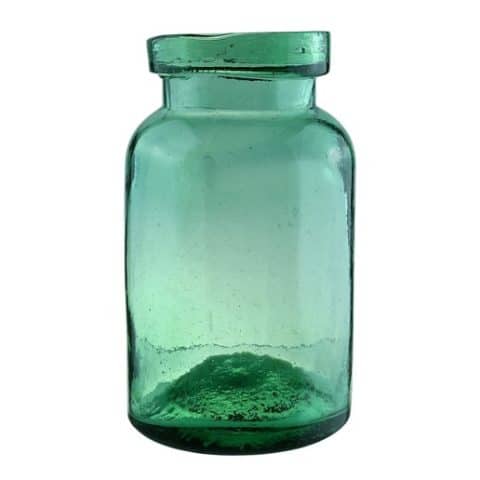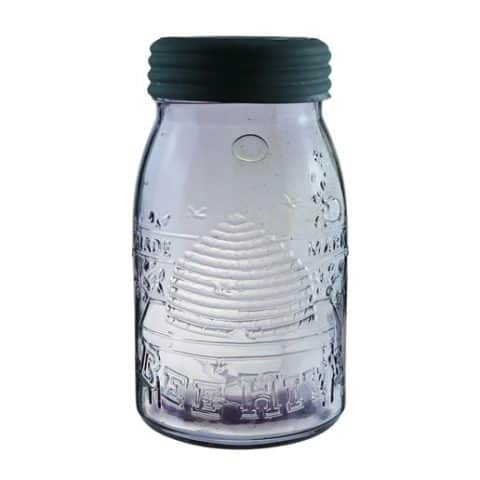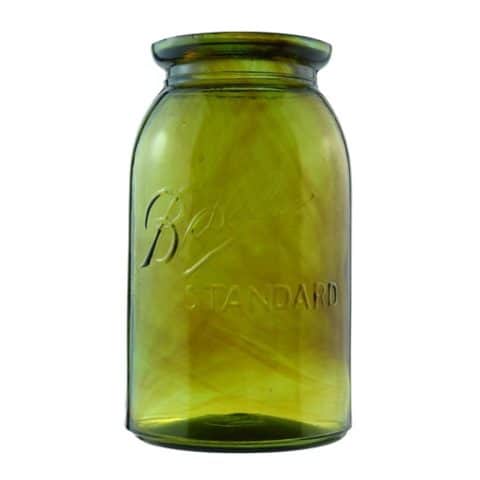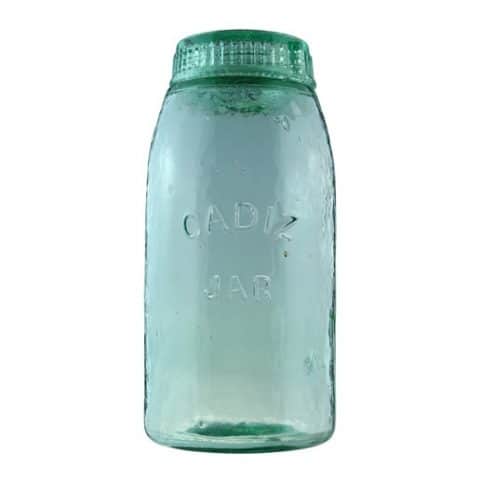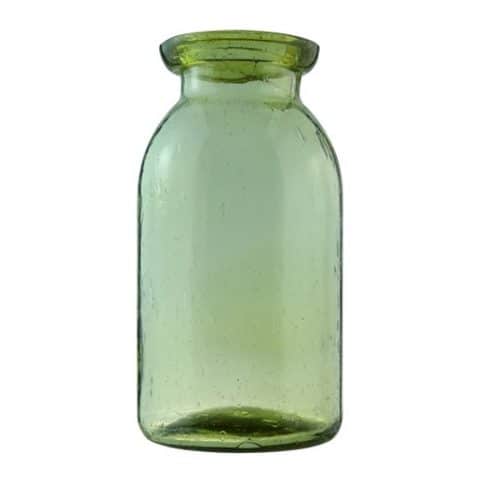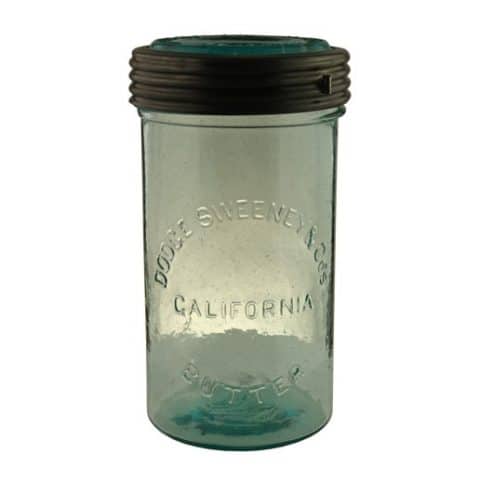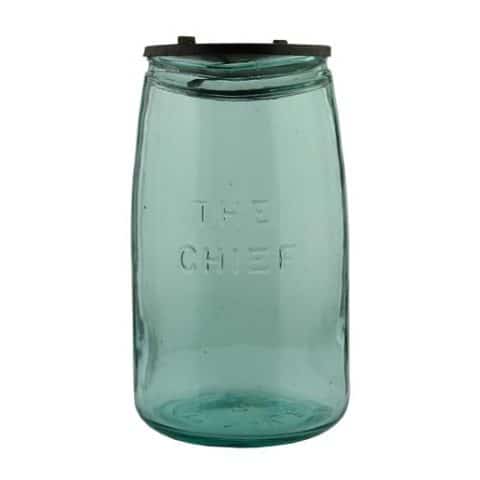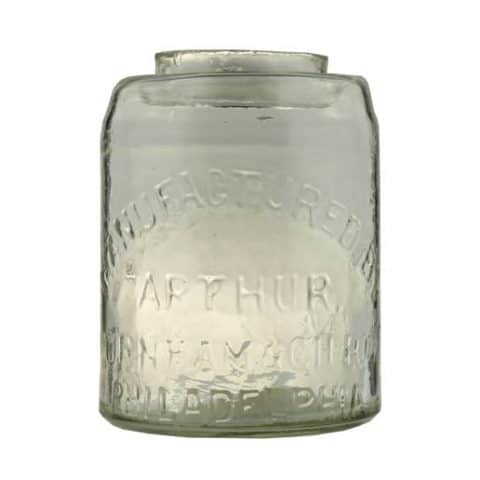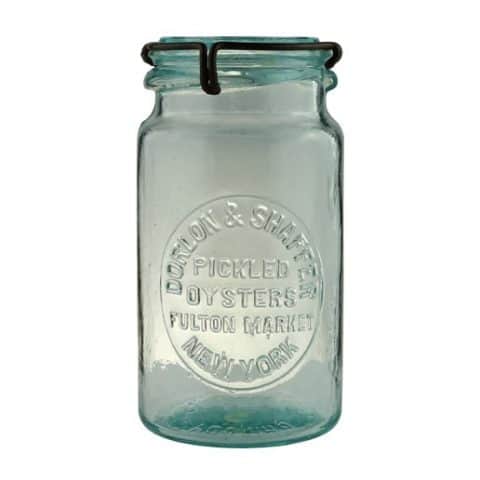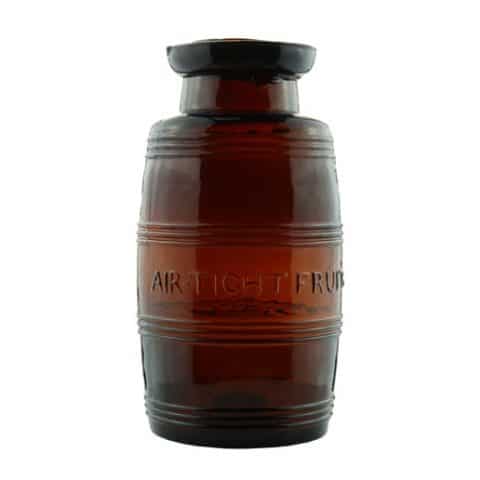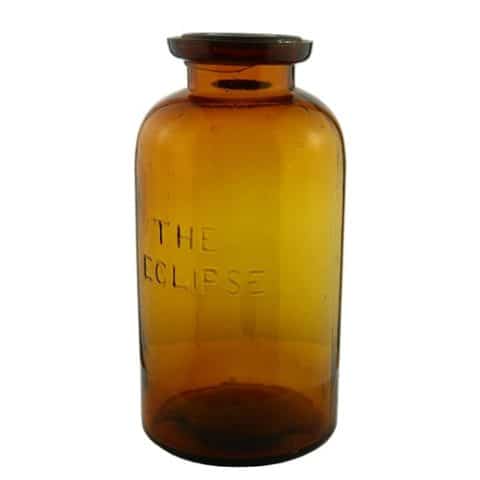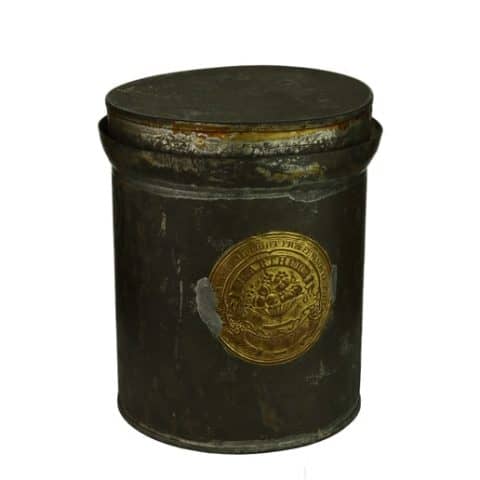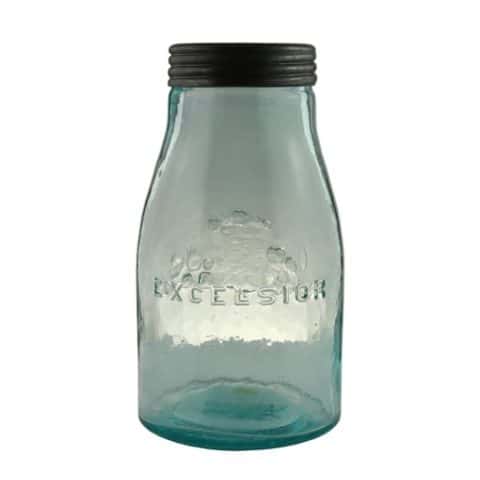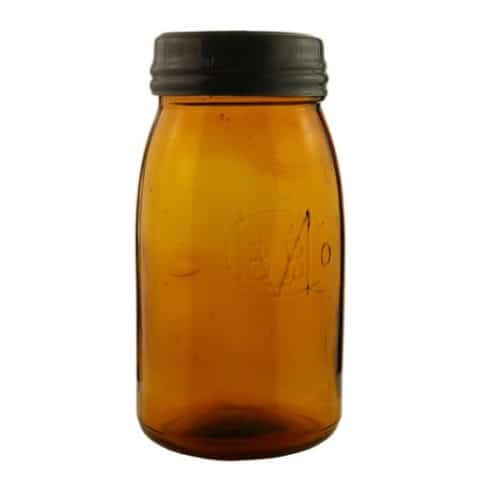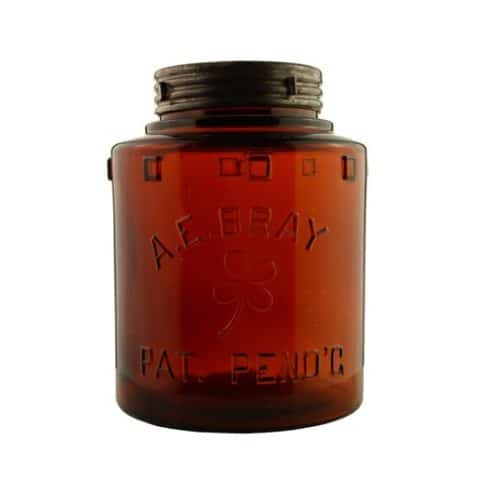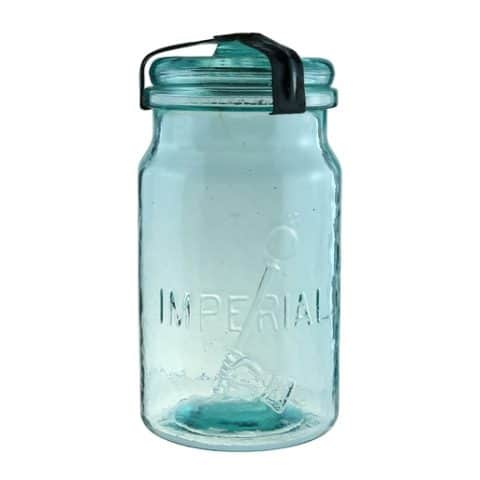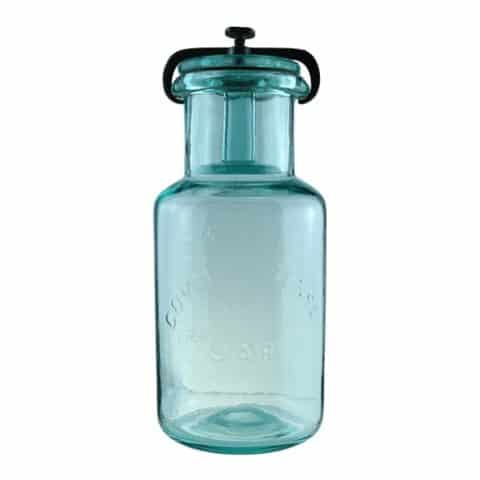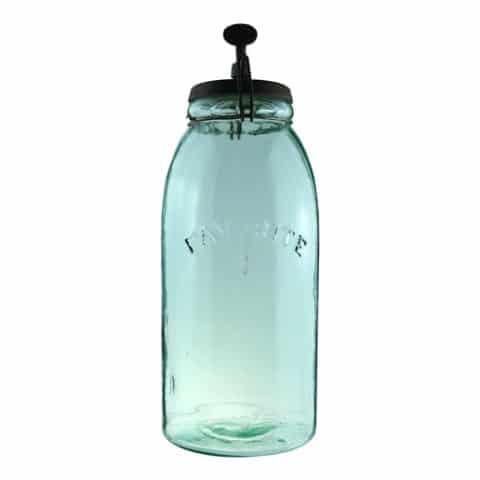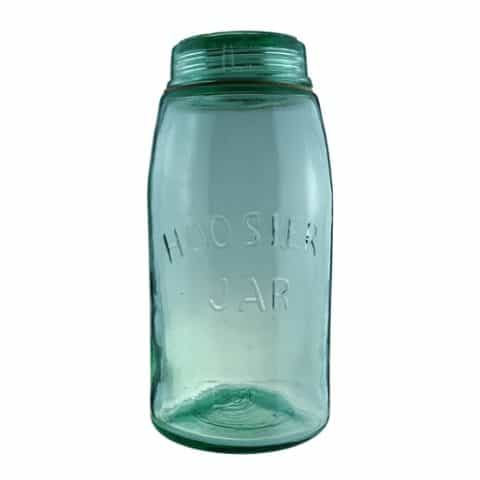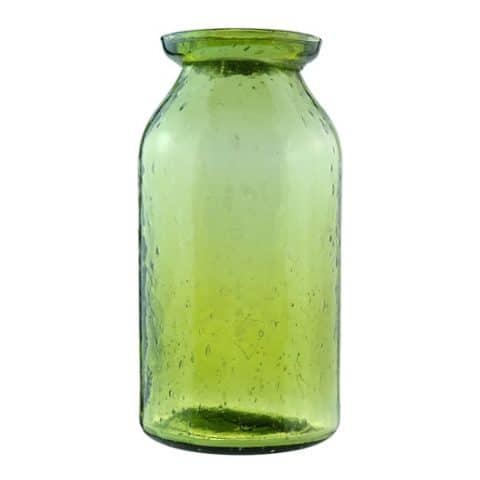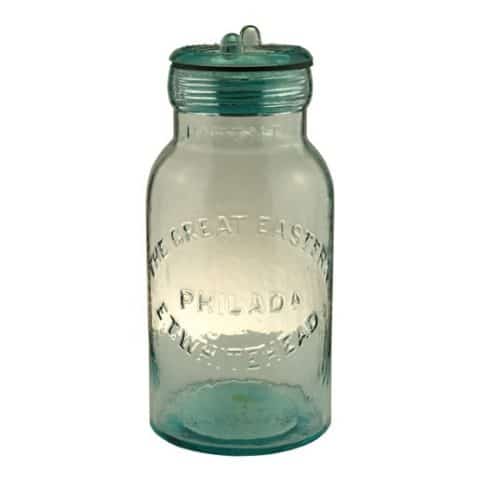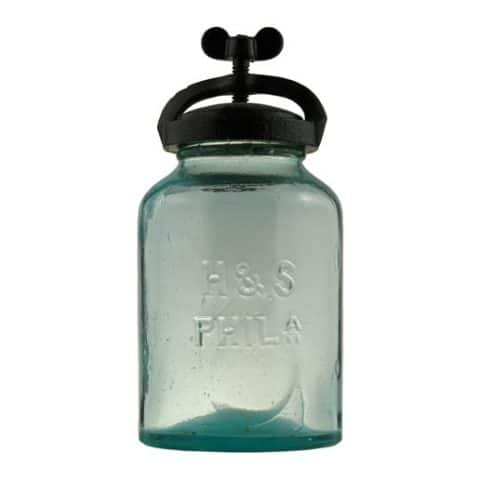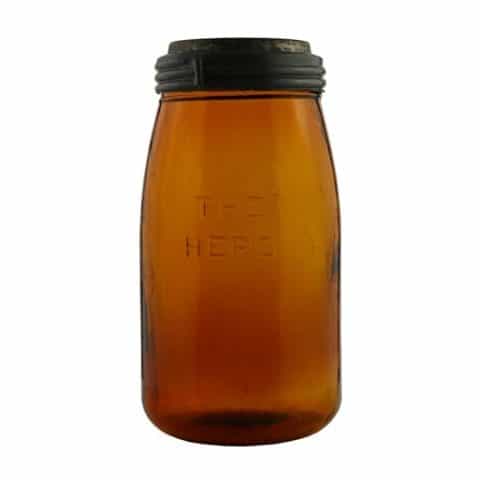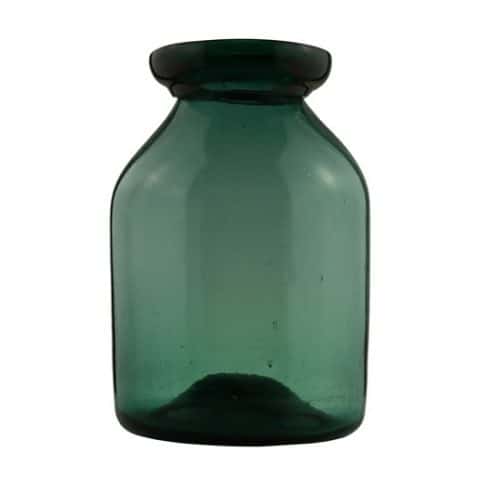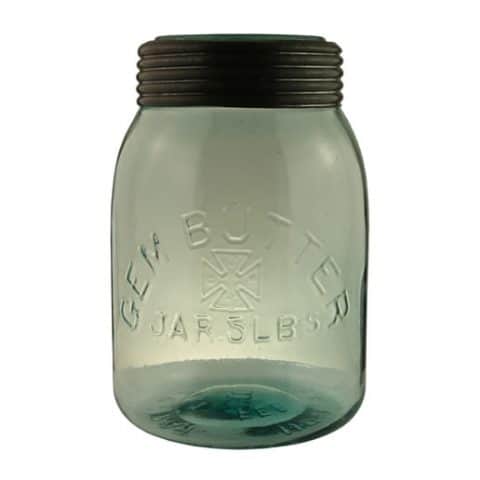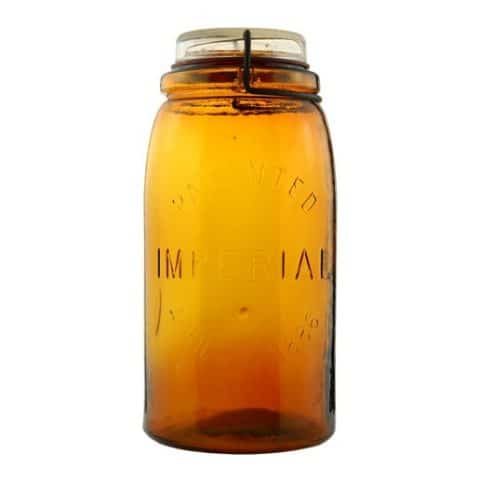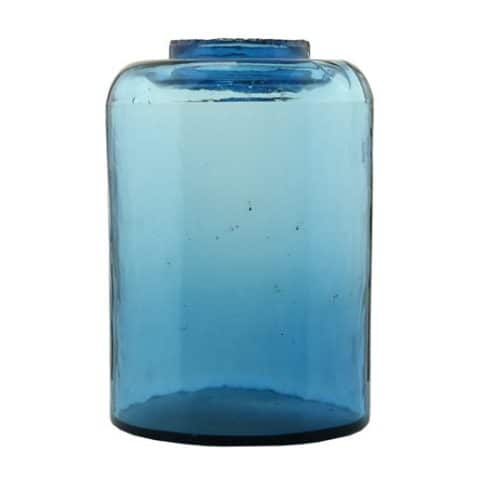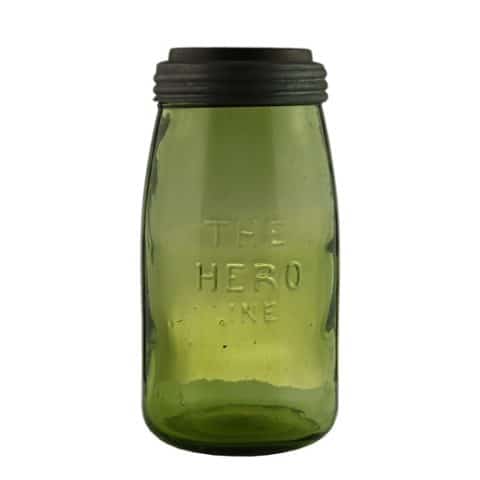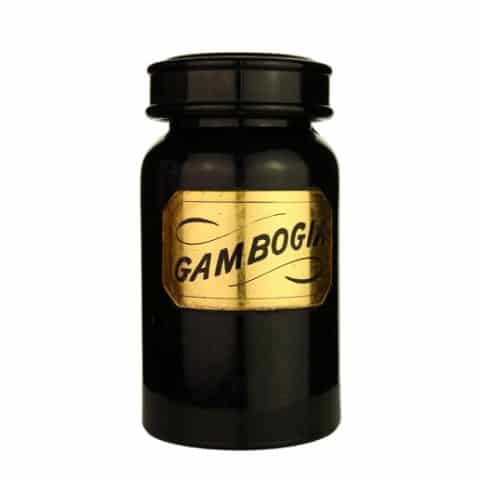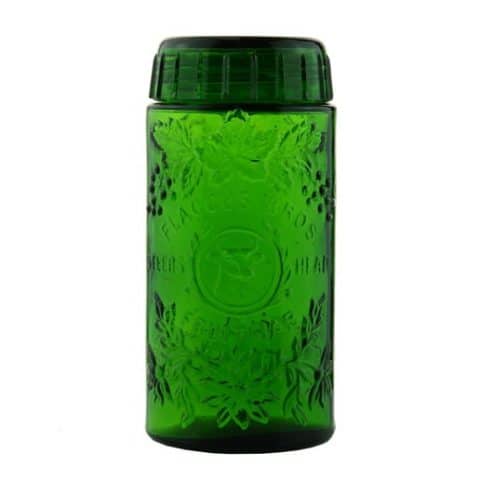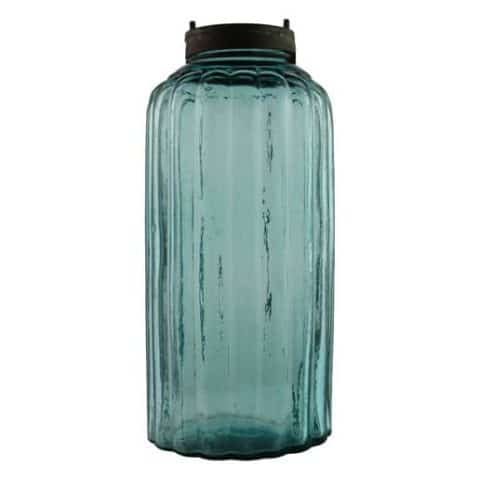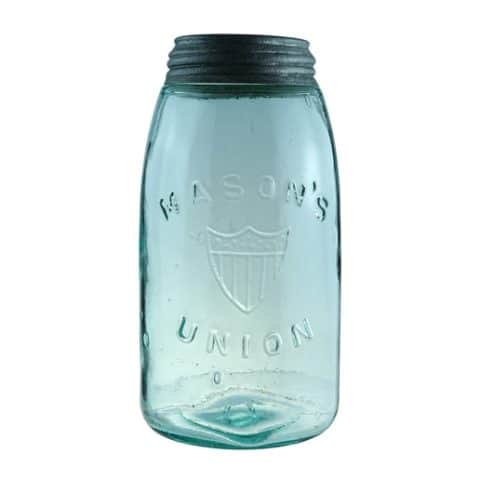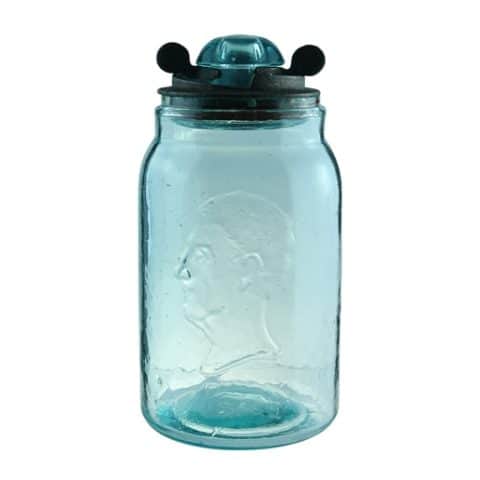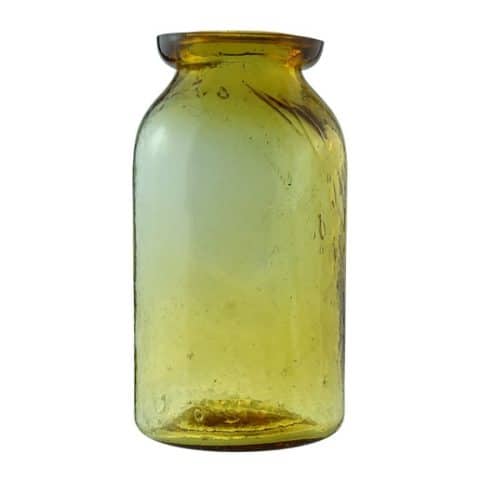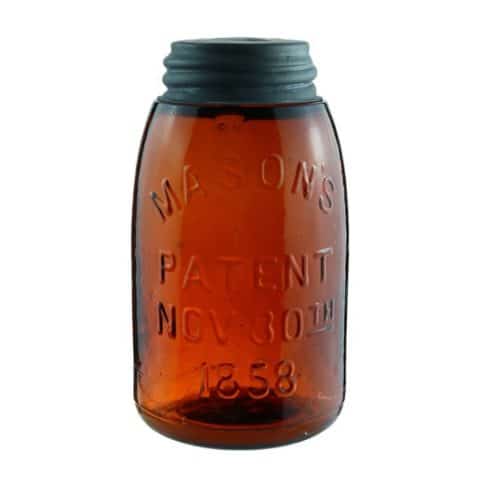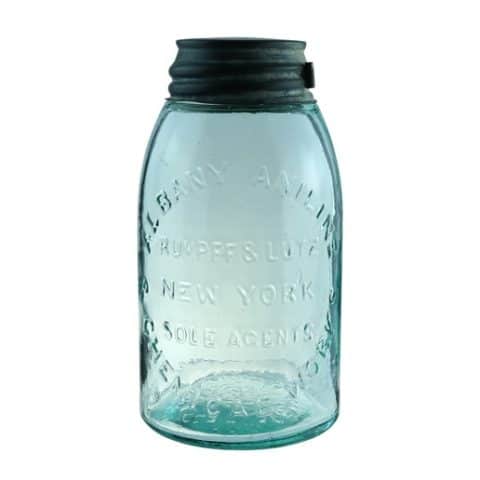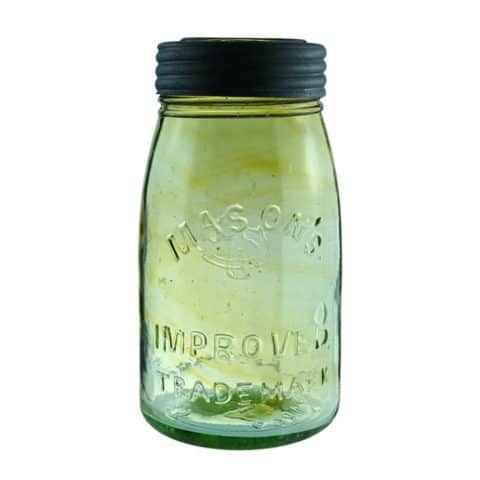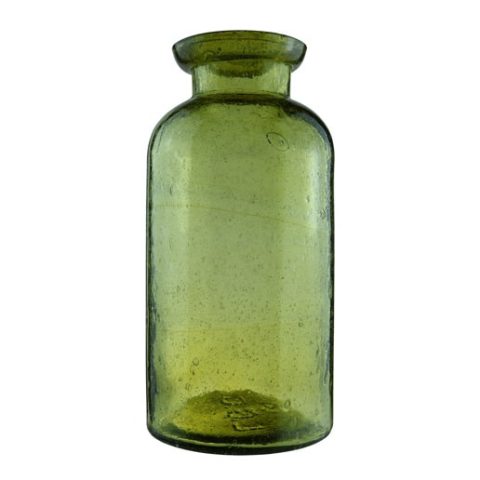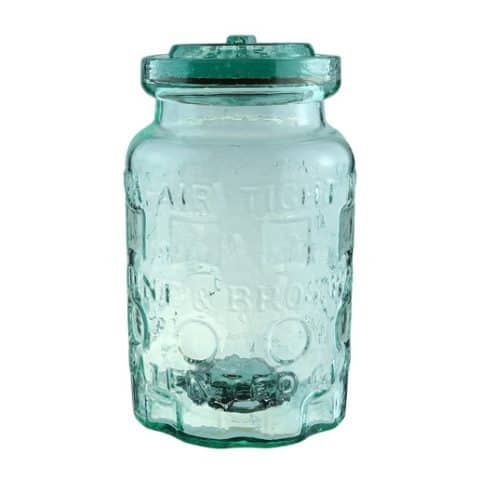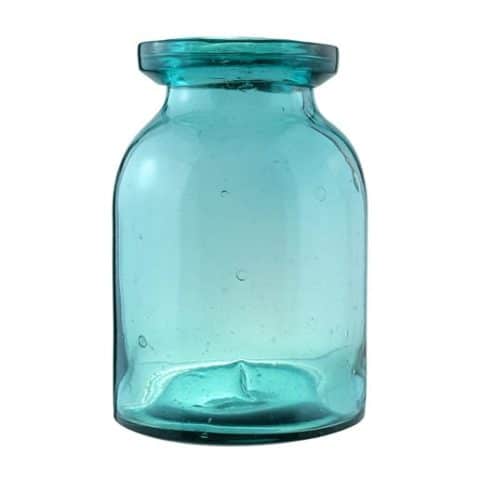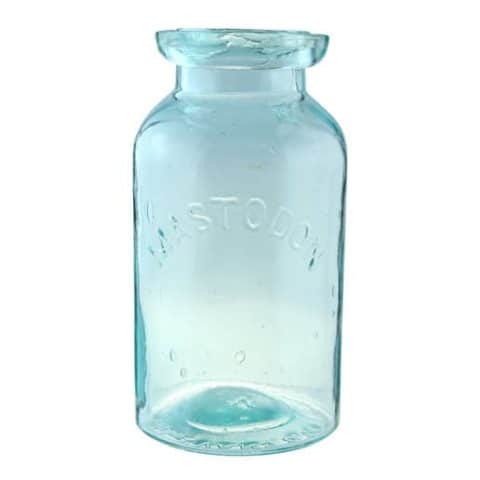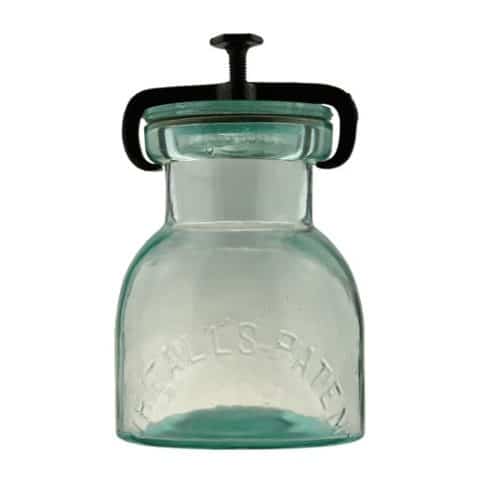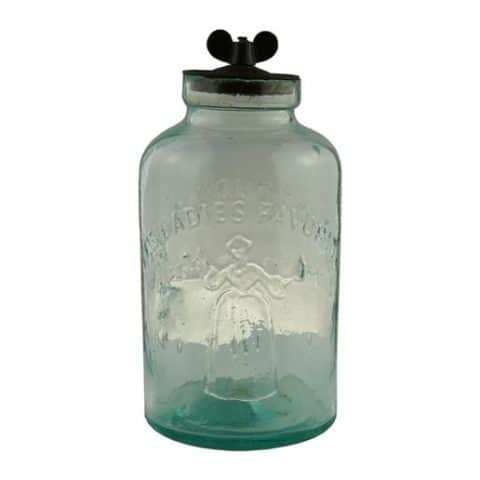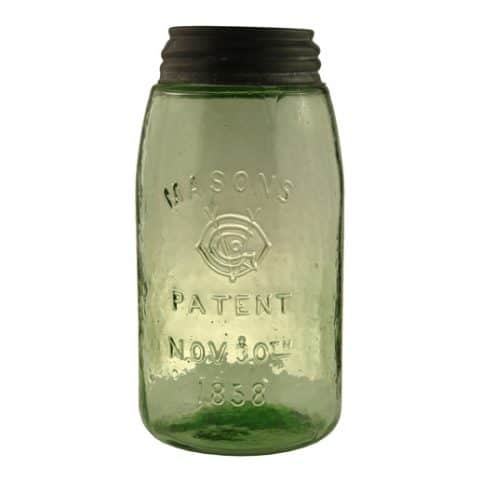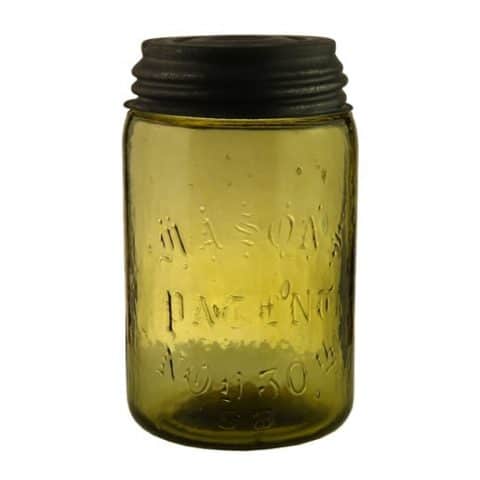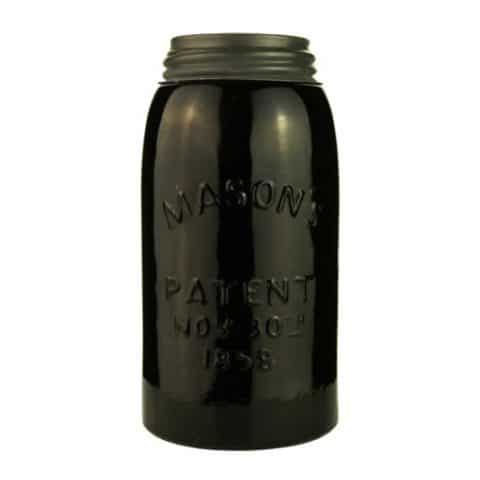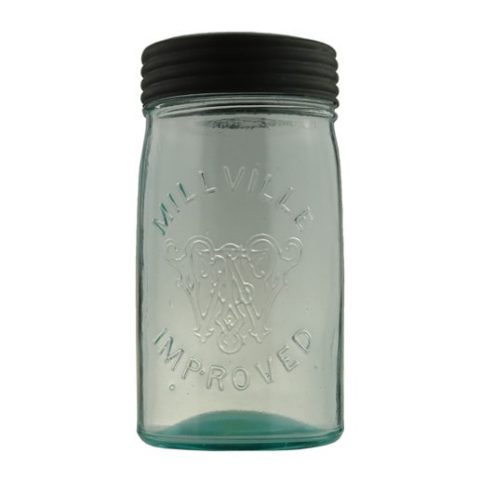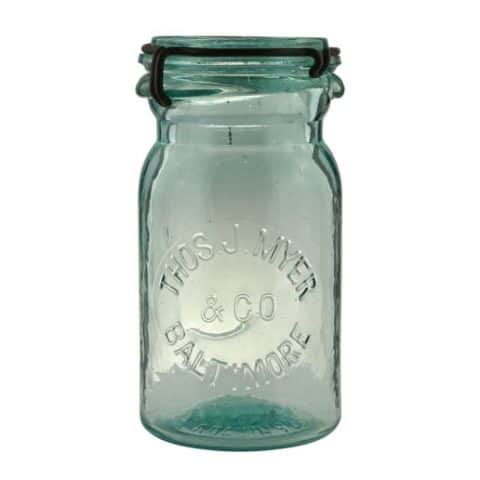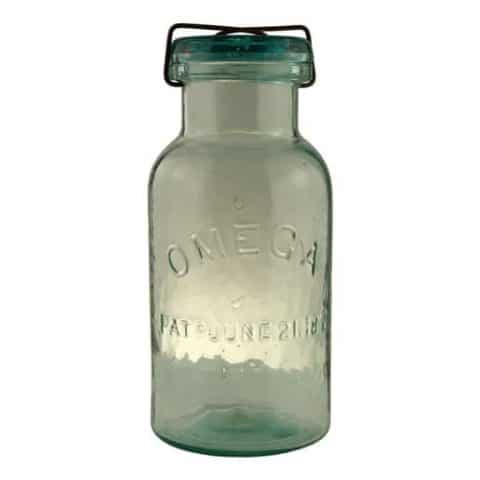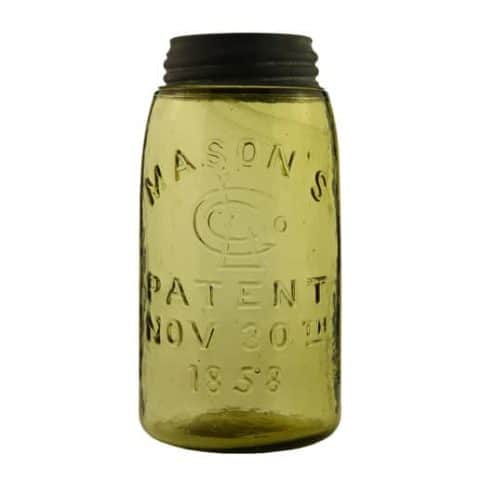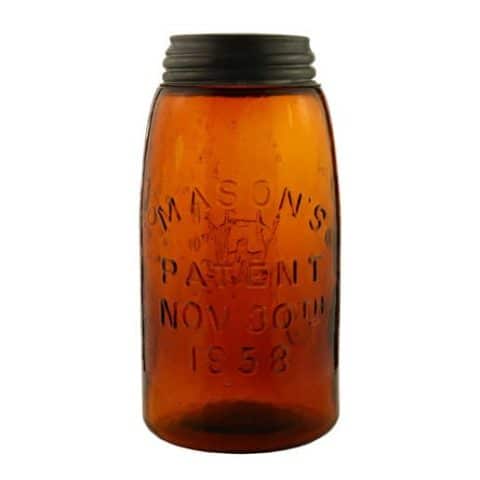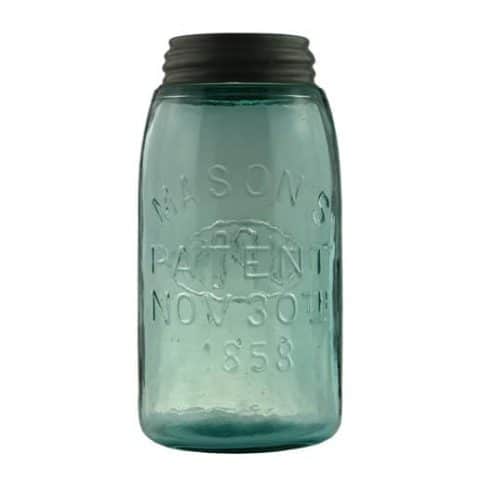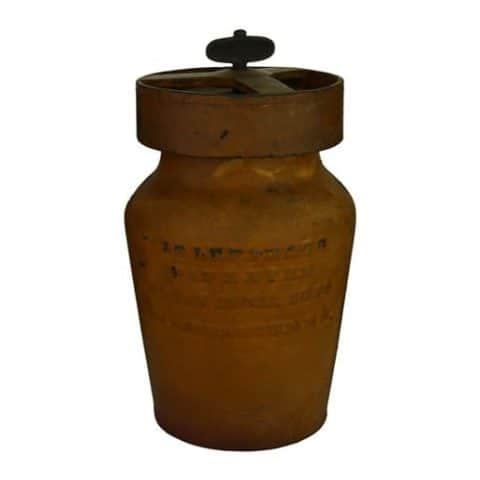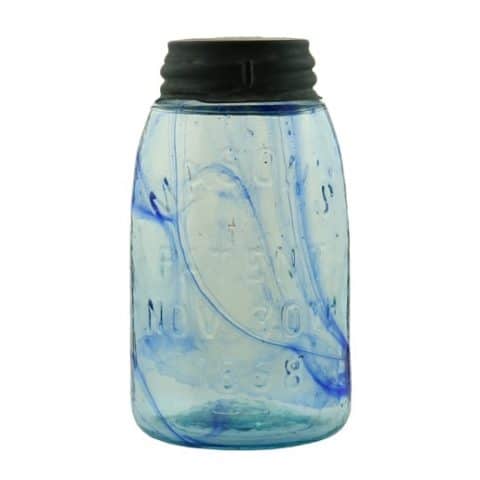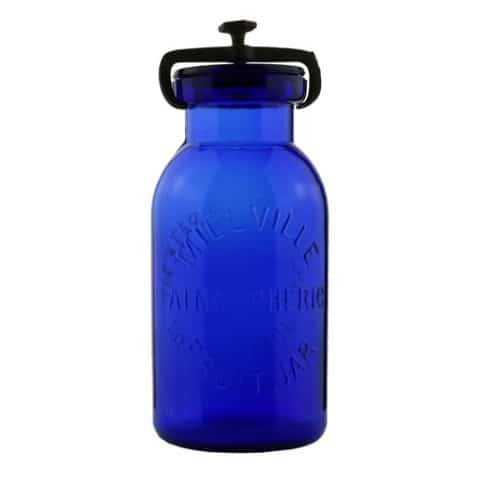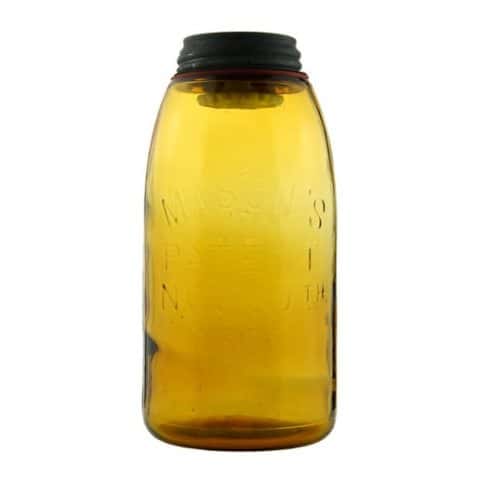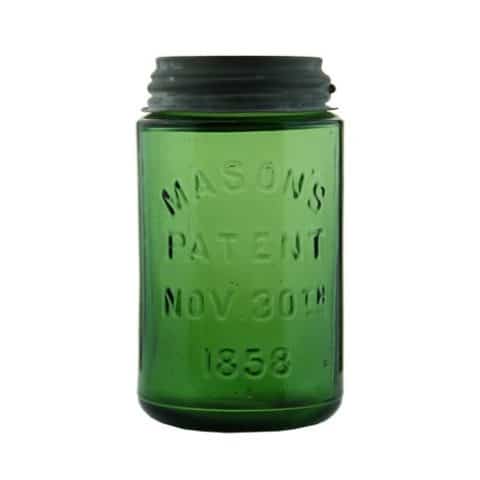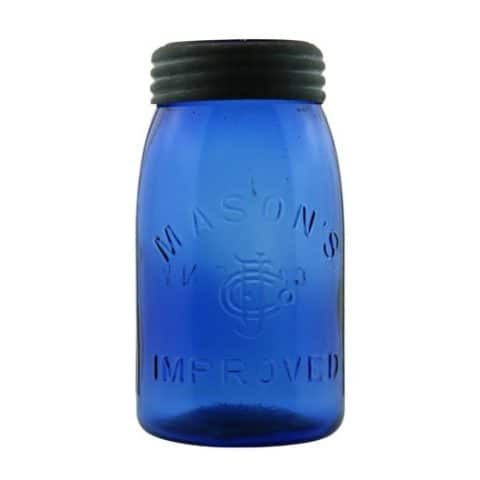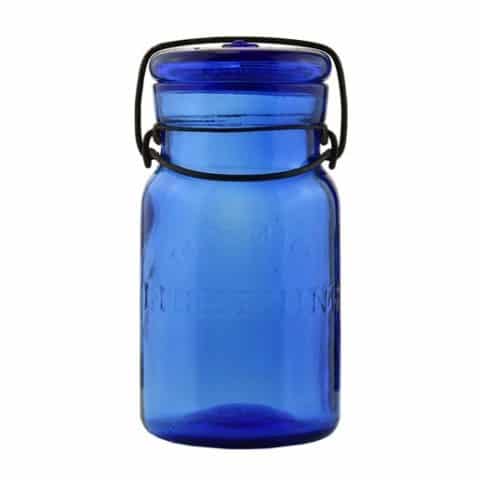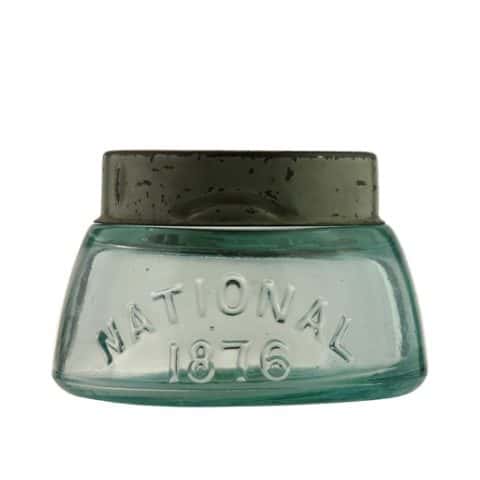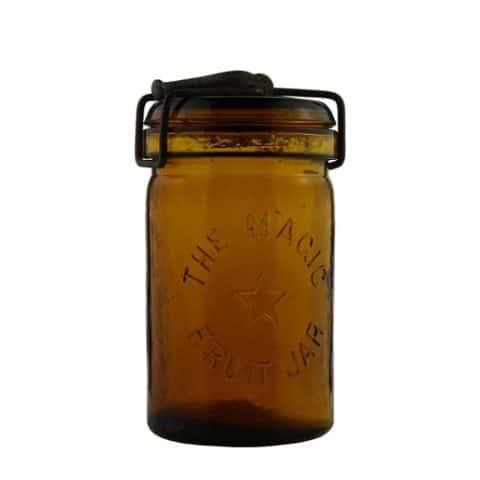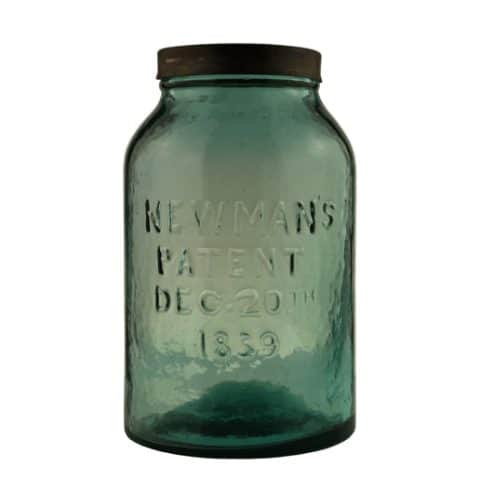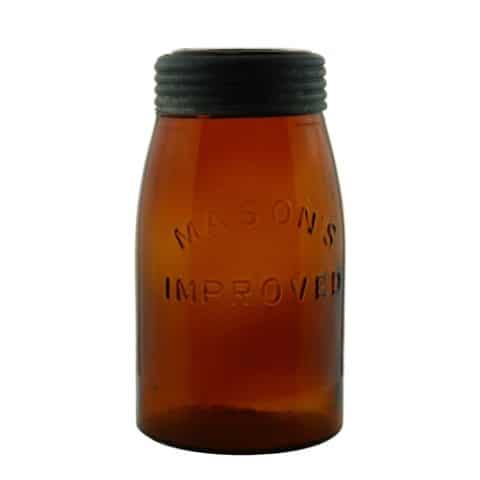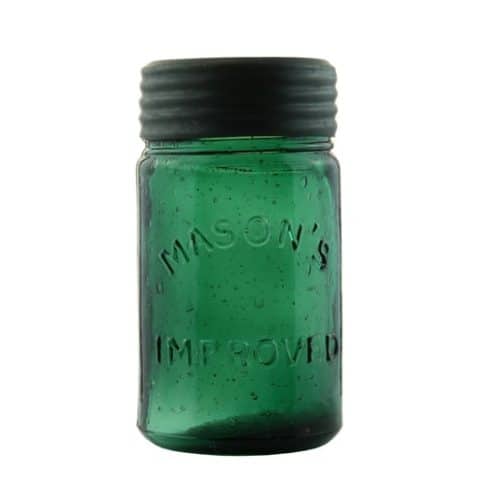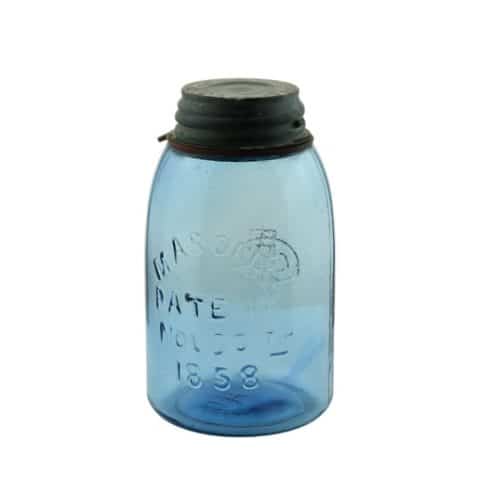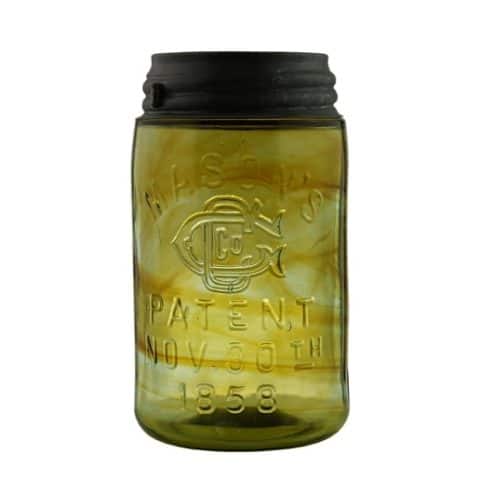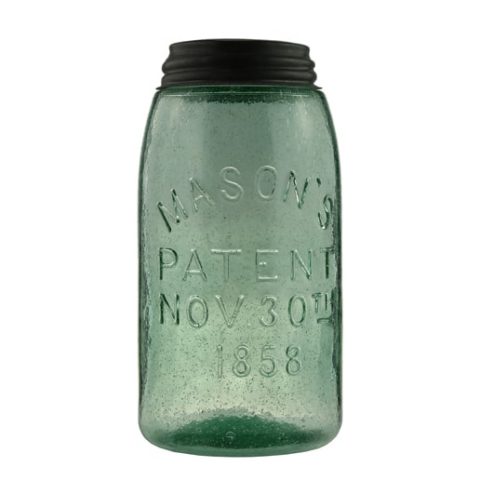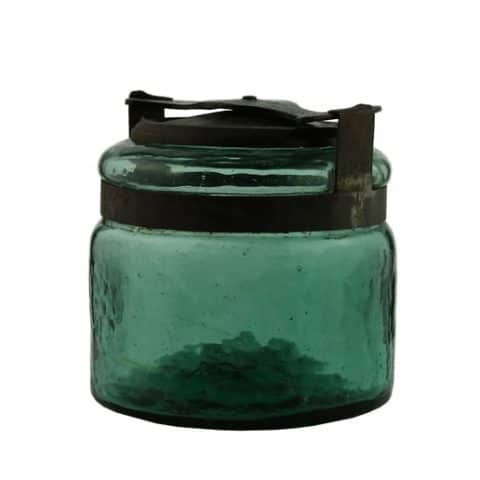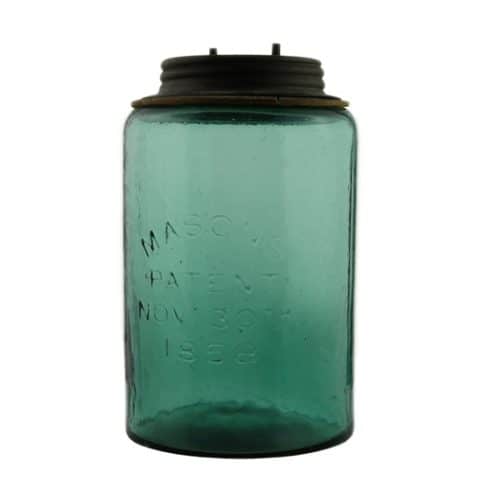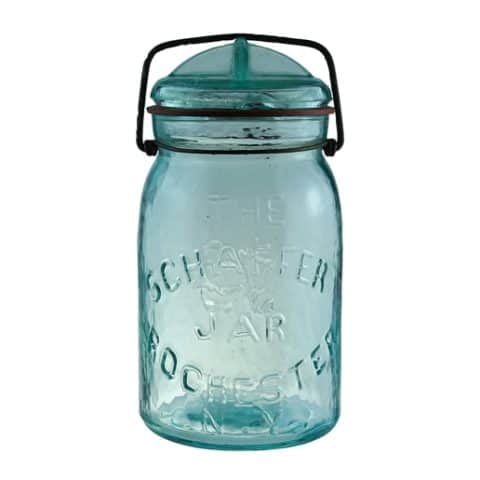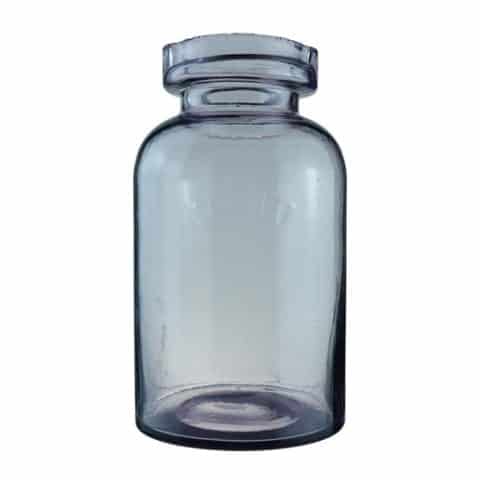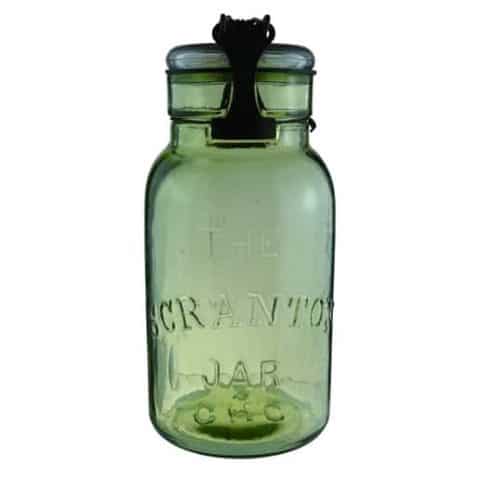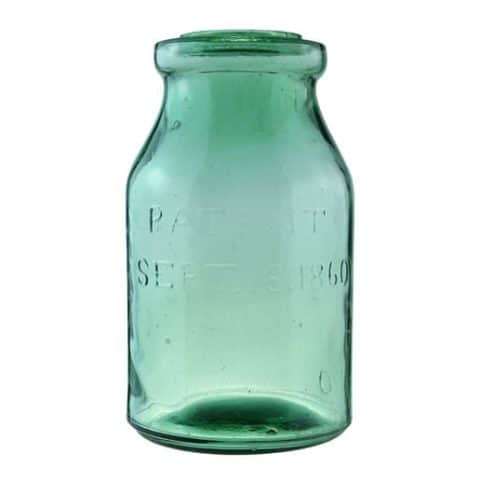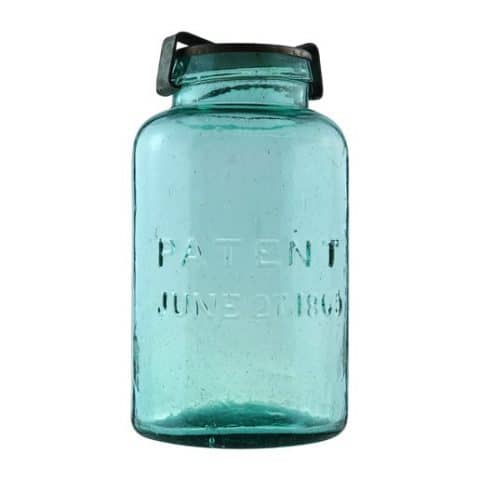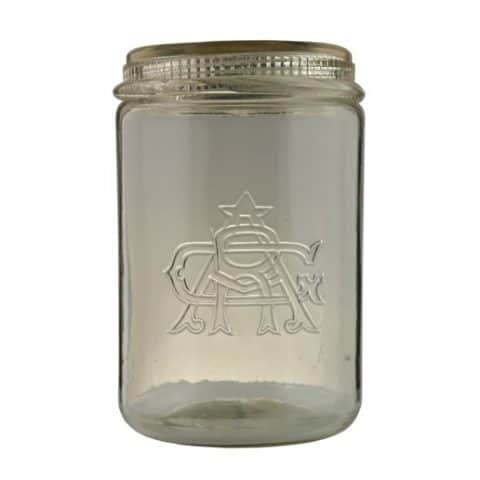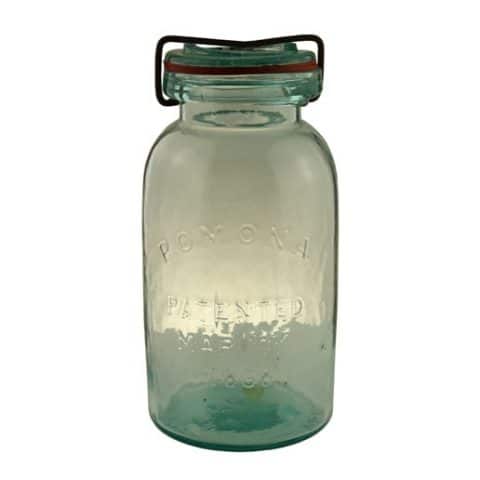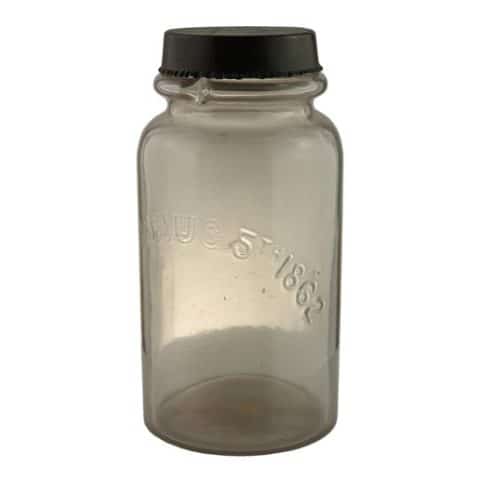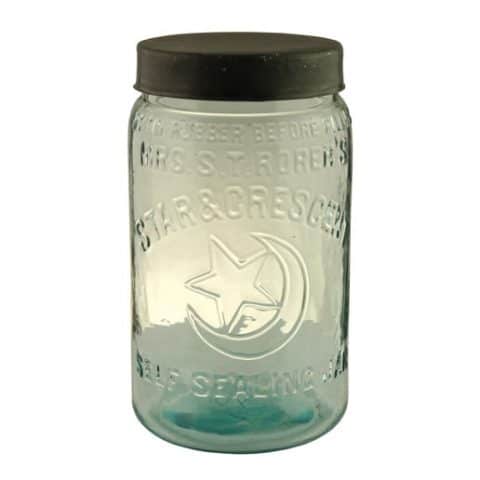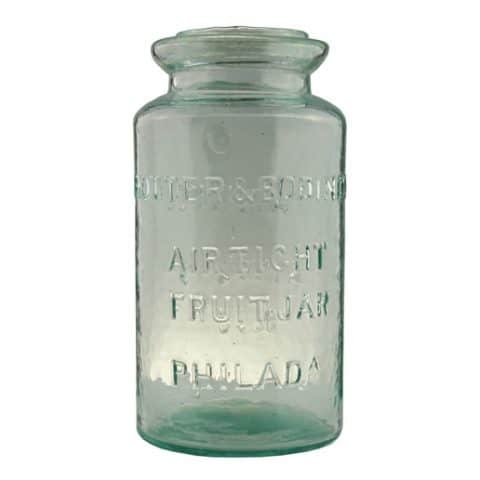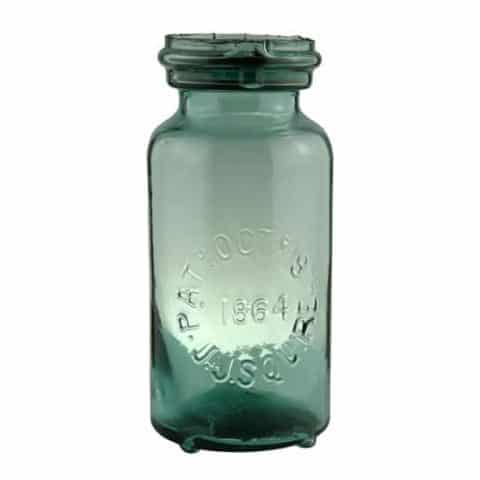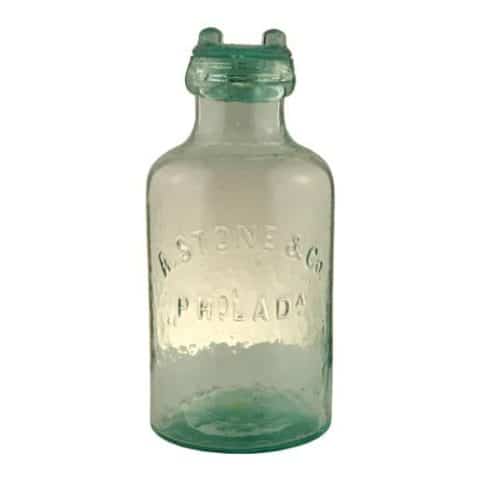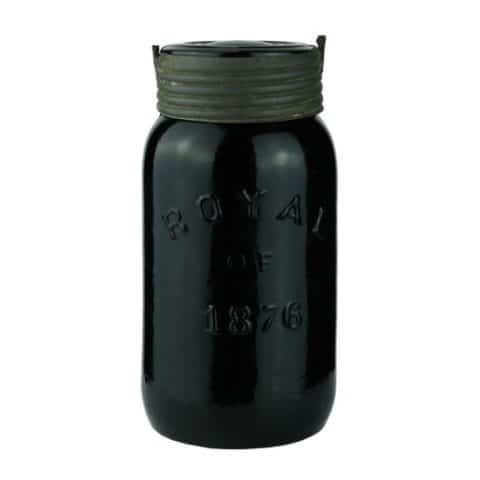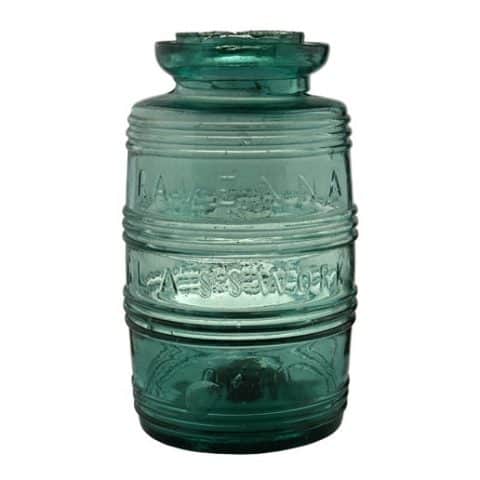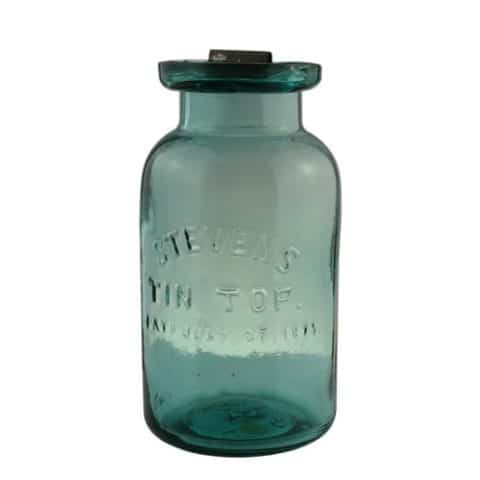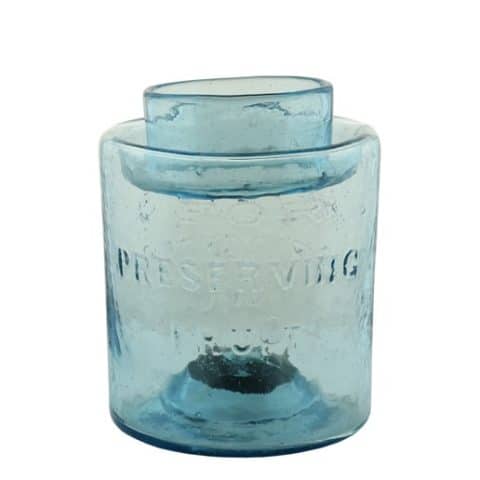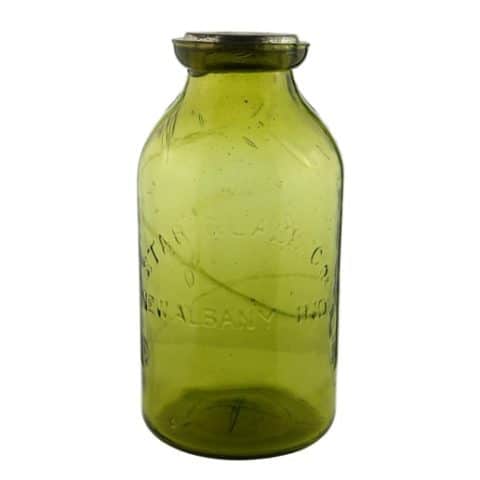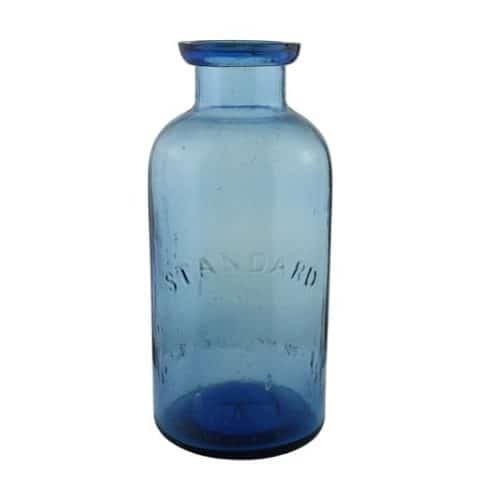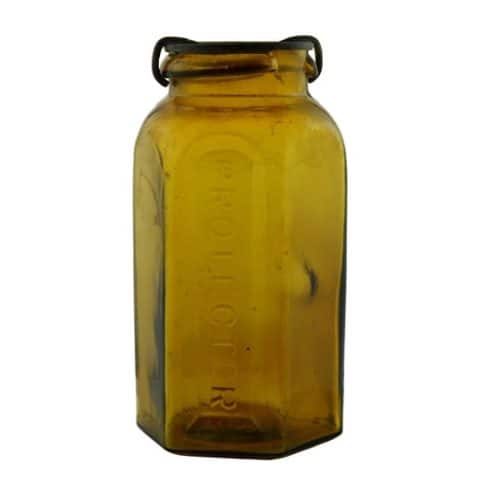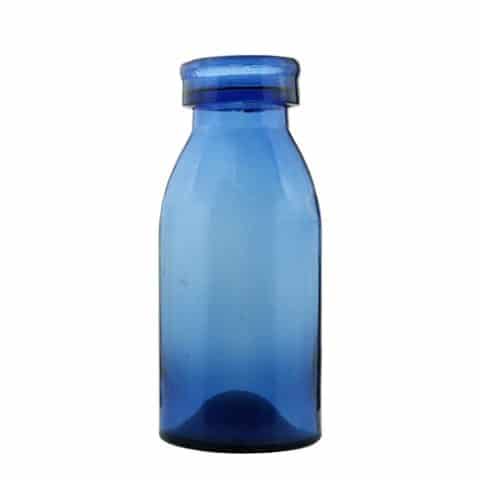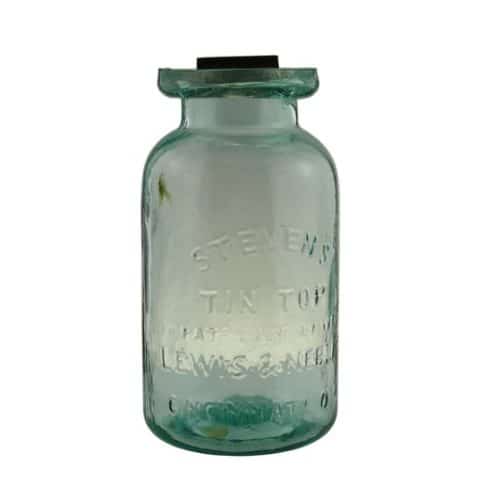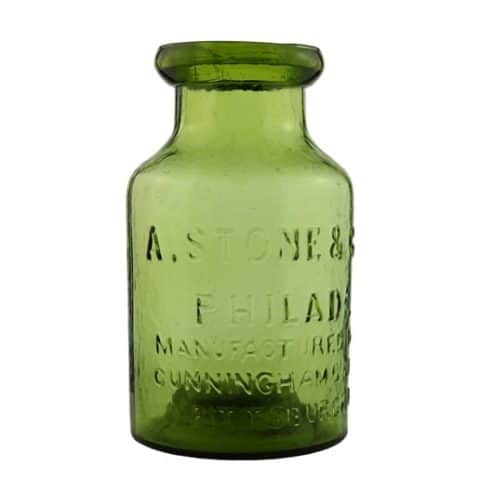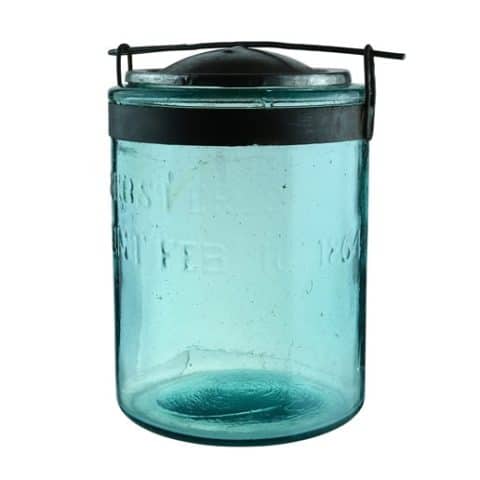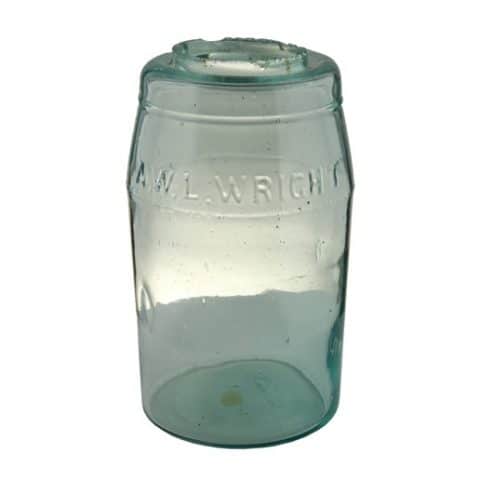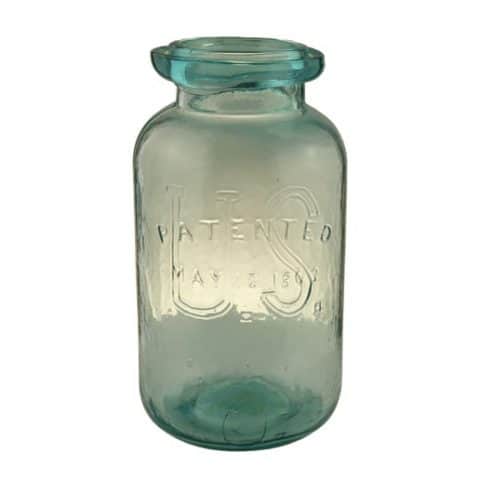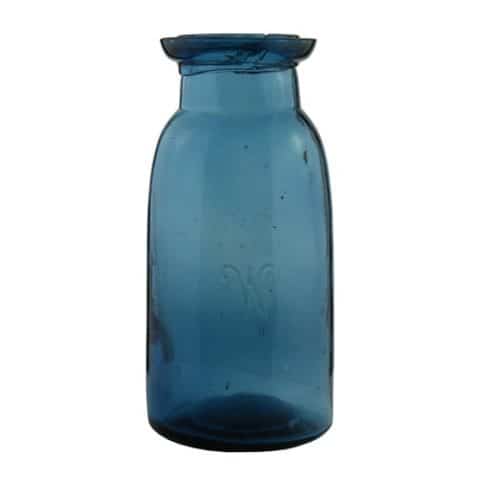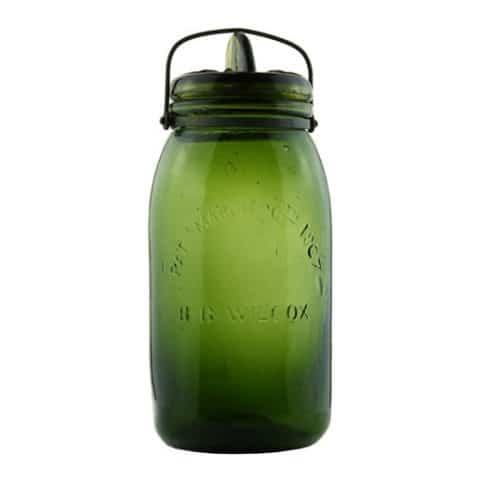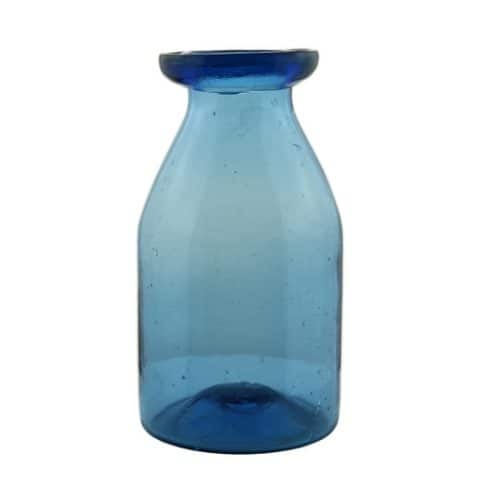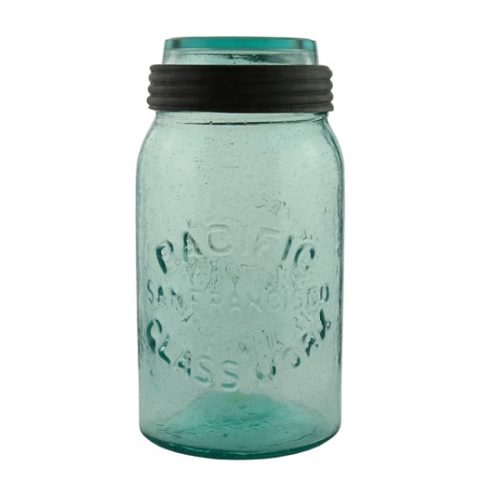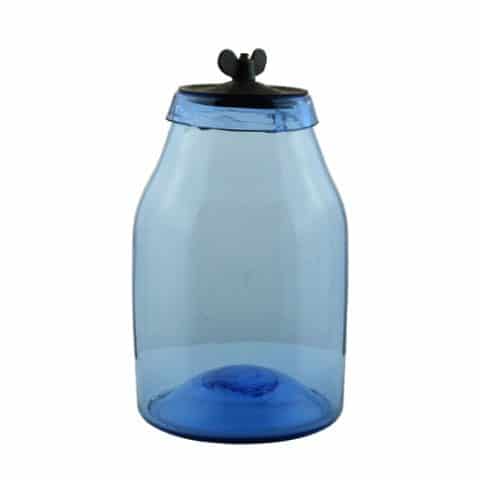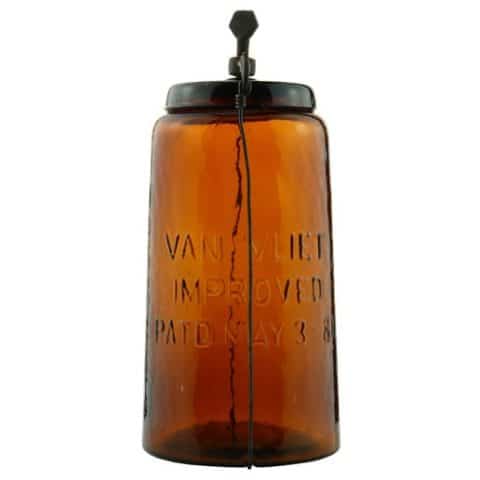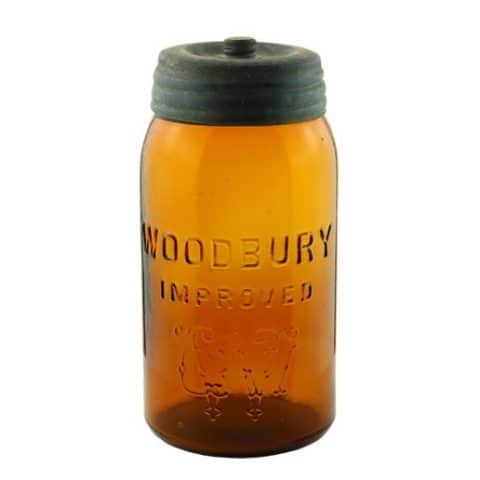Mason’s 16 Patent Nov 30th 1858
Mason’s 16 Patent Nov 30th 1858
“Numbered Mason”
Aquamarine Beehive Style Quart
Provenance: Ron Hands Collection

Our aquamarine “beehive” style quart has the original “Trade Mark S.M.S. Co. (monogram) Always Reliable” metal screw cap. The acronym stands for Sheet Metal Screw Co. The jar is hand blown with a ground lip and has a shoulder seal closure, a zinc screw cap, and a white milk glass liner. The base is smooth and unembossed. Different glass houses made the jars.

There are five centered lines of embossed sans serif copy on the obverse side of the jar. The first line presents ‘MASON’S’ in a convex arch. The third line is embossed ‘PATENT.’ Nestled between the first and third lines is the number ’16.’ The fourth line reads ‘NOV 30TH.’ The “TH” in “30th” is smaller, raised, and underscored. The fifth line reads ‘1858.’
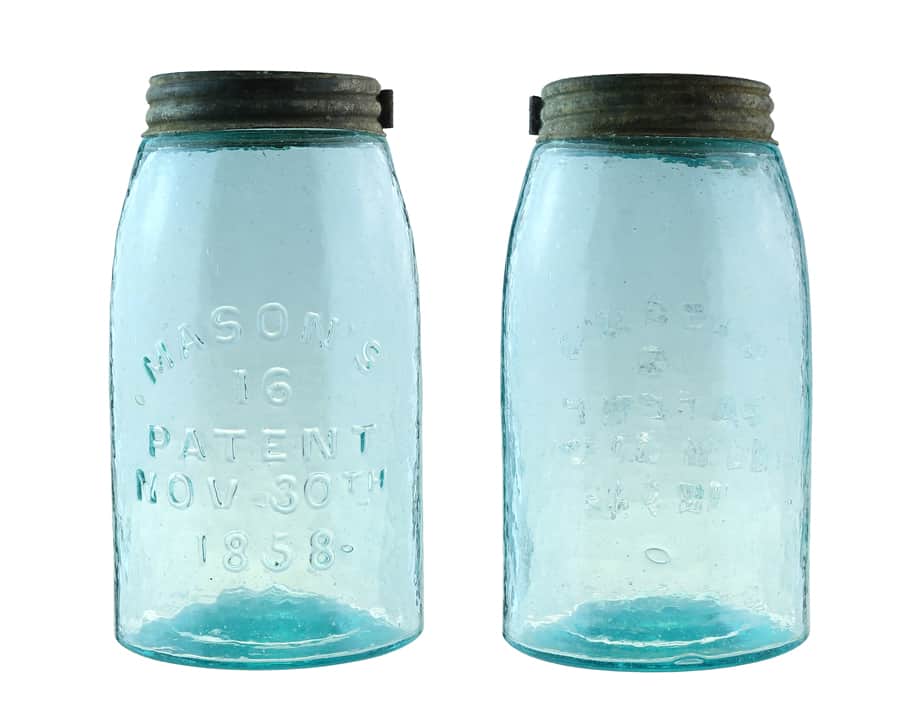
Many early Mason jars have an alphabetic letter or number embossed prominently between the words “Mason’s” and “Patent.” Most likely, the purpose of this character was for mold identification, such as with more modern glass molds, where you need to identify the parts of the mold to reassemble after use, cleaning, or repair. Numbers 1 through 31 are generally available while numbers above 31 are rare. Numbers through 31 can be found with manufacturers marks on the base. Numbers one through nine are also found with smooth lips.
Another explanation is that the characters did not identify the molds but rather the guild shop within the glass company that produced the specific jars. For example, the larger Pittsburgh district glasshouses would have used multiple shops within the factory, and the lettered or numbered jars would properly identify the day’s production. As the jars left the annealing ovens, a tally could easily have been made as to which shop produced what quantity of jars.
Many other lettered or numbered jars are base-embossed with the initials of the glass house that made the jar. Most commonly found is L & W for Lorenz and Wightman and B. P. & Co. for Beck, Phillips & Co., both located in Pittsburgh, Pennsylvania. Also, more than one company may have made specific lettered and numbered Masons. As a group, there is great interest among jar collectors in acquiring lettered and numbered jars, as many collectors will pay a premium price for the harder-to-find characters.
Sheet Metal Screw Company
The patents for Mason fruit jars were the most valuable and important patents in fruit jar history. As these began to expire in the early 1870s, Louis R. Boyd, John L. Mason (the original patent holder and inventor of the Mason jars), and two others formed a corporation to renew the patents and retain control of the Mason fruit jars.
Incorporated in December 1871, the Consolidated Fruit Jar Co. (CFJCo) manufactured the tinned-steel lids and screw bands for the jars and authorized various glass houses to actually produce the glass containers. The company was a combination of the Sheet Metal Screw Co., the Mason Mfg. Co., and several individuals. Louis R. Boyd represented the Sheet Metal Screw Co. The new firm claimed 66 Warren Street, New York—the former Sheet Metal Screw Co. location as its first home though the office moved to 49 Warren Street the following year. The actual plant was situated on the Raritan River in New Brunswick, New Jersey. Consolidated sold the fruit jar rights to Hero Glass Works around 1883.
See the museum example of a Mason’s CFJCo Improved, Clyde N.Y. jar.
We have many different examples of Mason jars in the FOHBC Virtual Museum Jar Gallery.
Primary Image: Mason’s 16 Patent Nov 30th, 1858 jar imaged on location by Alan DeMaison, FOHBC Virtual Museum Midwest Studio.
Support: Reference to Fruit Jar Annual 2020 – The Guide to Collecting Fruit Jars by Jerome J. McCann. Specifically, passages related to lettered and numbered jars.
Support: Reference to Consolidated Fruit Jar Co. by Bill Lockhart, Beau Shriever, Bill Lindsey, and Carol Serr
Support Image: Auction Lot 12414: Unlined Zinc Cap “TRADE MARK – SMS Co. – ALWAYS RELIABLE”, full-size unlined cap. Fits standard mouth size on early Mason jars such as the early Beehive series and others. Good with no pinholes or splits, scarce – Greg Spurgeon, North American Glass, April 2016
Support Image: Number 1 Mason’s Patent jar in the window. from the Intenet.
Support: Reference to Red Book #11, the Collector’s Guide to Old Fruit Jars by Douglas M. Leybourne, Jr.
Join the FOHBC: The Virtual Museum is a project of the Federation of Historical Bottle Collectors (FOHBC). To become a member.

